Abstract
Lymphocytes with Fc receptors (FcR) for IgG active in natural cytotoxicity and antibody-dependent cellular cytotoxicity were separated into sheep erythrocyte rosetting (E+) and nonrosetting (E-) fractions, and examined for reactivity with the OK panel of hybridoma-produced monoclonal antibodies. Few cells in either the E+ FcR+ or the E- FcR+ fraction reacted with seven antibodies used to define T cells in various stages of differentiation (OK3, OKT4, OKT5, OKT6, OKT8, OKT9, OKT10). Neither fraction expressed an Ia-like antigen (detected by OKI1), but both were highly reactive with OKM1, an antibody that reacts with monocytes and granulocytes. Incubation of these cytotoxic effector cells with OKM1 plus complement abolished all cytotoxic reactivity, but incubation with a pan-T cell antibody (OKT3) plus complement had no significant effect. These cells were not monocyte precursors, because they could not be induced in vitro to develop macrophage characteristics. The data indicate that most cytotoxic effector cells in natural cytotoxicity and antibody-dependent cellular cytotoxicity are not in the T cell lineage, but have a myeloid origin.
Full text
PDF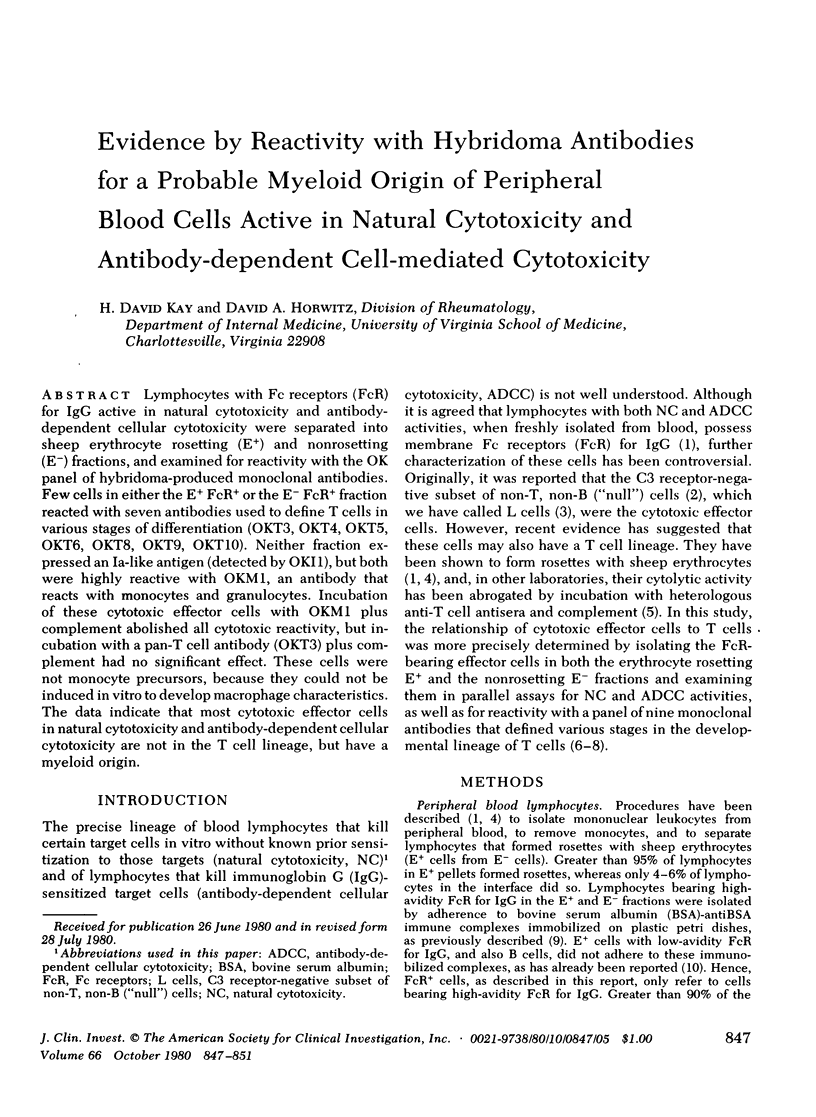
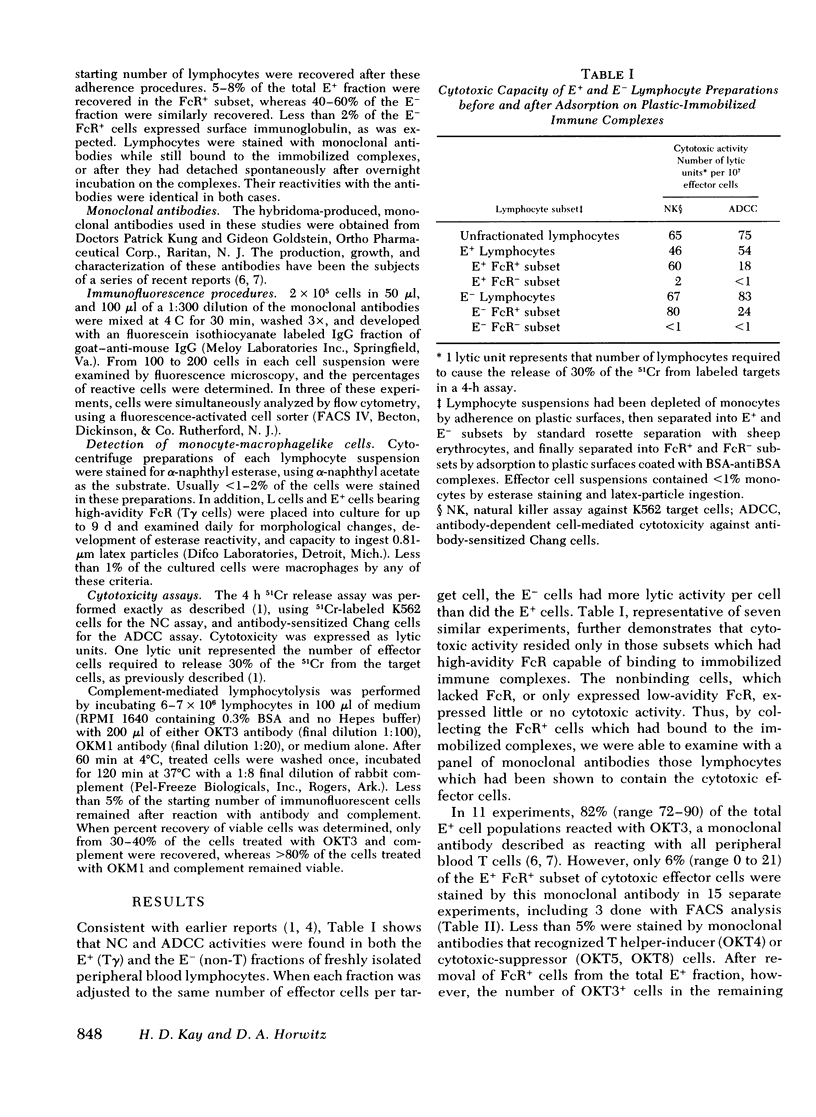
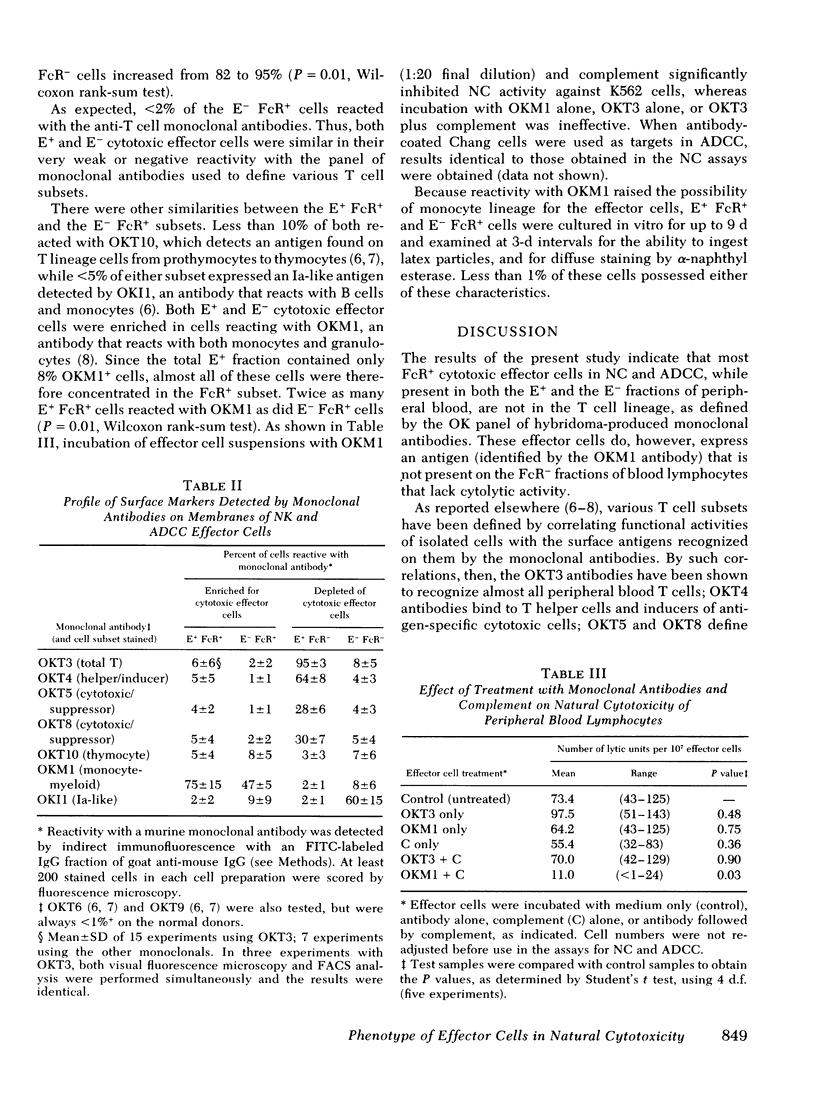
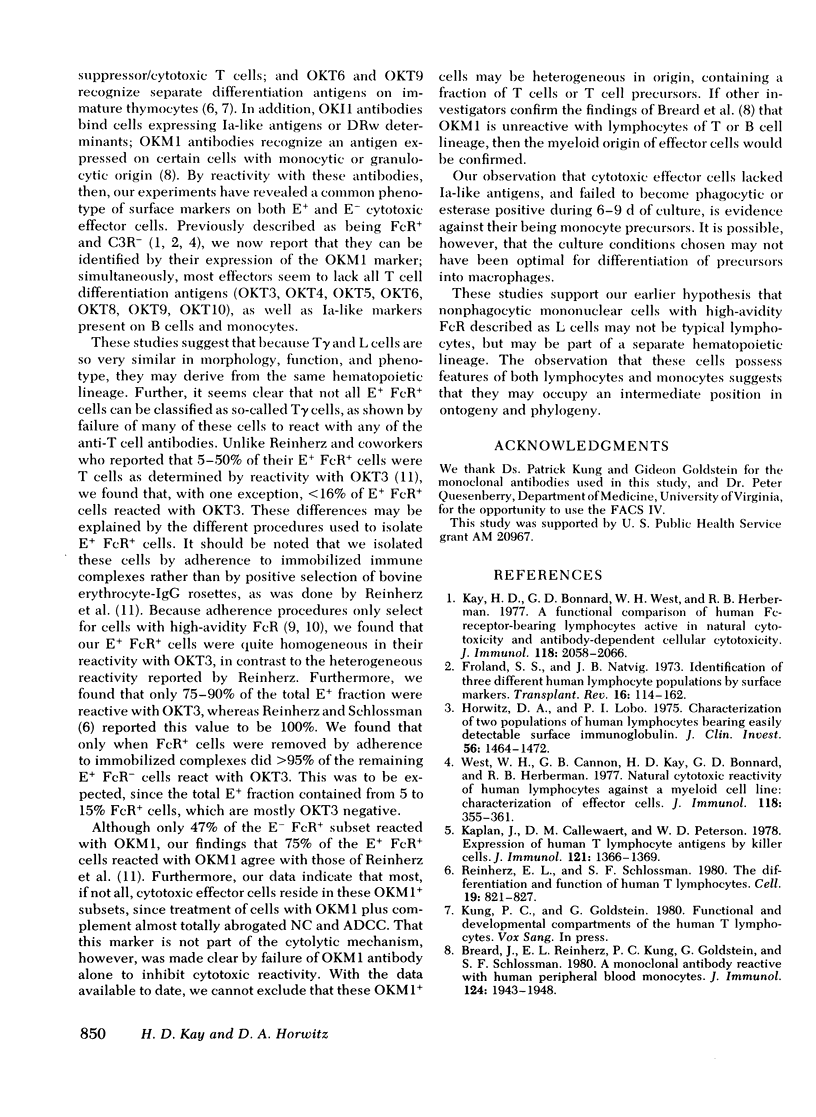
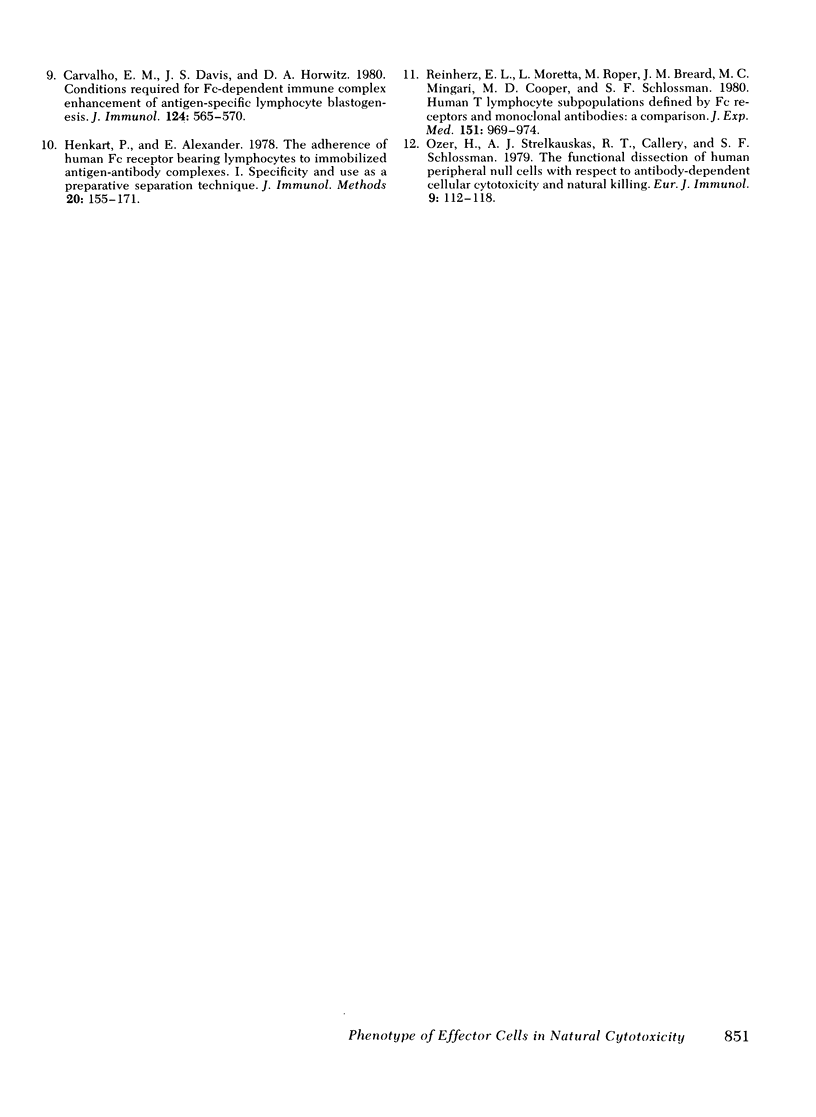
Selected References
These references are in PubMed. This may not be the complete list of references from this article.
- Breard J., Reinherz E. L., Kung P. C., Goldstein G., Schlossman S. F. A monoclonal antibody reactive with human peripheral blood monocytes. J Immunol. 1980 Apr;124(4):1943–1948. [PubMed] [Google Scholar]
- Carvalho E. M., Davis J. S., 4th, Horwitz D. A. Conditions required for Fc-dependent immune complex enhancement of antigen-specific lymphocyte blastogenesis. J Immunol. 1980 Feb;124(2):565–570. [PubMed] [Google Scholar]
- Froland S. S., Natvig J. B. Identification of three different human lymphocyte populations by surface markers. Transplant Rev. 1973;16:114–162. doi: 10.1111/j.1600-065x.1973.tb00119.x. [DOI] [PubMed] [Google Scholar]
- Henkart P., Alexander E. The adherence of human Fc receptor bearing lymphocytes to immobilized antigen-antibody complexes. I. Specificity and use as preparative separation technique. J Immunol Methods. 1978;20:155–171. doi: 10.1016/0022-1759(78)90253-3. [DOI] [PubMed] [Google Scholar]
- Horwitz D. A., Lobo P. I. Characterizaiton of two populations of human lymphocytes bearing easily detectable surface immunoglobulin. J Clin Invest. 1975 Dec;56(6):1464–1472. doi: 10.1172/JCI108227. [DOI] [PMC free article] [PubMed] [Google Scholar]
- Kaplan J., Callewaert D. M., Peterson W. D., Jr Expression of human T lymphocyte antigens by killer cells. J Immunol. 1978 Oct;121(4):1366–1369. [PubMed] [Google Scholar]
- Kay H. D., Bonnard G. D., West W. H., Herberman R. B. A functional comparison of human Fc-receptor-bearing lymphocytes active in natural cytotoxicity and antibody-dependent cellular cytotoxicity. J Immunol. 1977 Jun;118(6):2058–2066. [PubMed] [Google Scholar]
- Ozer H., Strelkauskas A. J., Callery R. T., Schlossman S. F. The functional dissection of human peripheral null cells with respect to antibody-dependent cellular cytotoxicity and natural killing. Eur J Immunol. 1979 Feb;9(2):112–118. doi: 10.1002/eji.1830090204. [DOI] [PubMed] [Google Scholar]
- Reinherz E. L., Moretta L., Roper M., Breard J. M., Mingari M. C., Cooper M. D., Schlossman S. F. Human T lymphocyte subpopulations defined by Fc receptors and monoclonal antibodies. A comparison. J Exp Med. 1980 Apr 1;151(4):969–974. doi: 10.1084/jem.151.4.969. [DOI] [PMC free article] [PubMed] [Google Scholar]
- Reinherz E. L., Schlossman S. F. The differentiation and function of human T lymphocytes. Cell. 1980 Apr;19(4):821–827. doi: 10.1016/0092-8674(80)90072-0. [DOI] [PubMed] [Google Scholar]
- West W. H., Cannon G. B., Kay H. D., Bonnard G. D., Herberman R. B. Natural cytotoxic reactivity of human lymphocytes against a myeloid cell line: characterization of effector cells. J Immunol. 1977 Jan;118(1):355–361. [PubMed] [Google Scholar]


